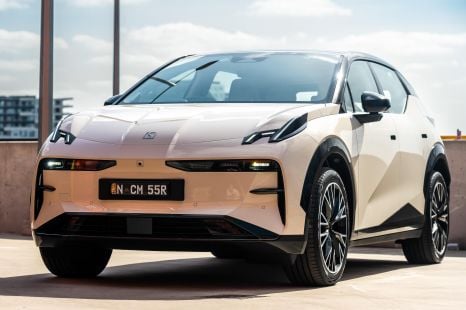

James Wong
7.9
6 Days Ago
The GV80 Coupe is the sportiest SUV from Genesis, but is enough to buy one? We get behind the wheel for a long-term test to find out.
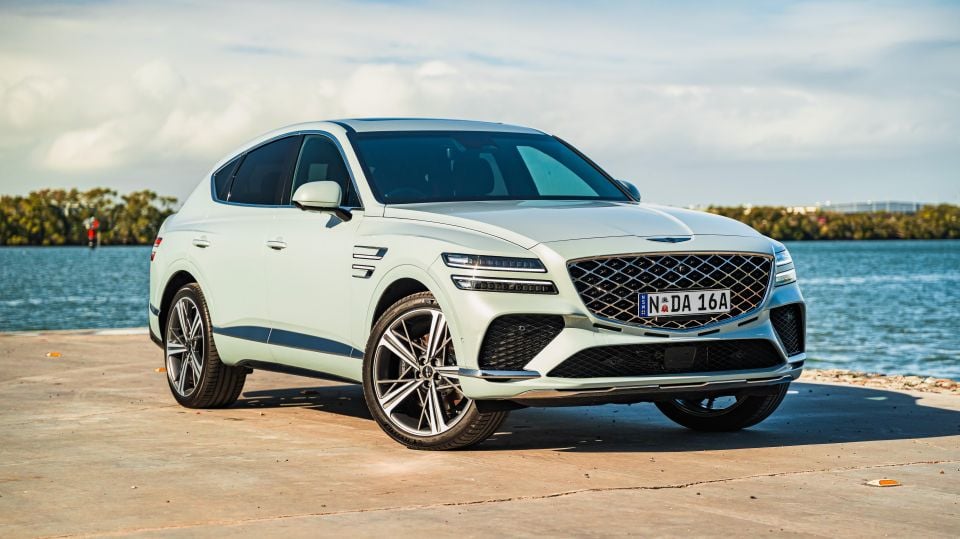
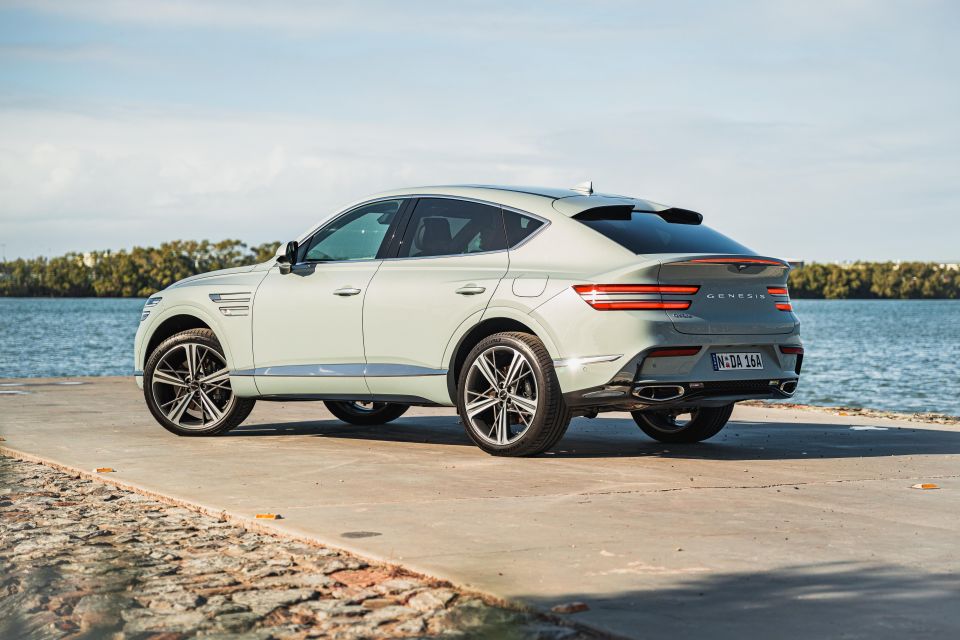

Take advantage of Australia's BIGGEST new car website to find a great deal on a Genesis GV80.
Having launched locally just five years ago, Genesis still remains a relatively unknown brand in Australia, a market that very much values history and prestige when it comes to luxury cars.

For that reason, it’s important to have a quick brand overview and its current market position in Australia.
The Genesis badge has featured on cars here and there since 2004, but the luxury arm of Hyundai came about as an independent brand in 2015, and released its first car in 2017 – making the company the newest of luxury contenders in the segment.
Genesis – a nine-year-old brand – is going up against heavyweights Mercedes-Benz (founded in 1883), Audi (1909), BMW (1916), and Lexus (1989). Those who enjoy human behavioural studies will know that the value of a brand is often the deciding factor in choosing a product in a competitive segment.
This is important to remember for a brand like Genesis, its popularity (or lack thereof) and sales volume is not a reflection of the product itself, but often a lack of brand recognition and history.
Genesis sold 1916 cars in Australia during 2023, which was up an impressive 85 per cent on 2022. In comparison to Mercedes-Benz (28,853 deliveries), BMW (26,184 deliveries), Audi (19,039 deliveries), and Lexus (15,192 deliveries) there’s a clear indication the market will take its time to understand and trust the Korean luxury brand.
Since coming to Australia, Genesis has launched seven brand stores in major locations around Sydney (CBD, Parramatta), Melbourne (CBD, Prahran), Brisbane (Fortitude Valley, Southport) and Perth (Osborne Park), with additional stores on the way.
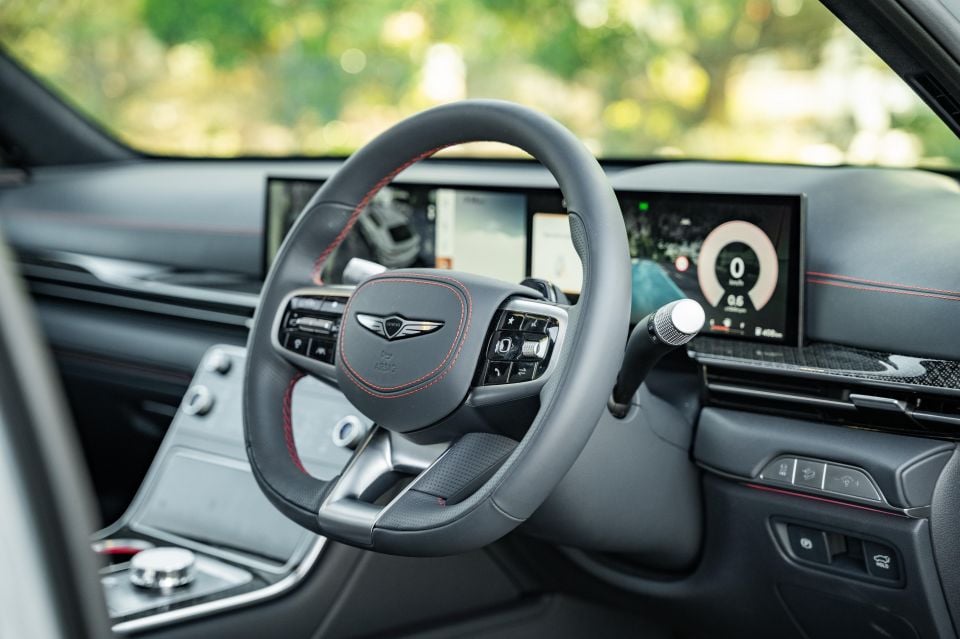
Globally, Genesis has been pushing into new segments since launch, while also working hard on some amazing concepts and a rumoured supercar set for release in the near future. This is part of building a brand to be on the same consideration list as its main European and Japanese rivals.
Like Mercedes-Benz, Genesis vehicles are priced by the factory and there is no haggling or negotiation. This agency model means what you pay for your Genesis is the same amount as what someone else would have paid (minus demonstrators and trade-in valuation tricks).
With that context in mind, let’s focus on the car at hand – the 2025 Genesis GV80 Coupe.
Having decided to go a little bigger, the GV80 was high on our shopping list because my wife absolutely loves Genesis now that she has been driving one for a few years. She loves the high quality interior, the sensation of the buttons, and also the way they look. Three points I wholeheartedly agree with.
If you want a long-term report on a Genesis, have a read of my Genesis GV70 review, an amazing SUV I had in my possession for almost two years after owning a Jaguar F-Pace and Land Rover Discovery Sport prior.
We did contemplate also going EV now we have a full charging setup in the house, but the GV80 is not available with electrification in its current iteration.
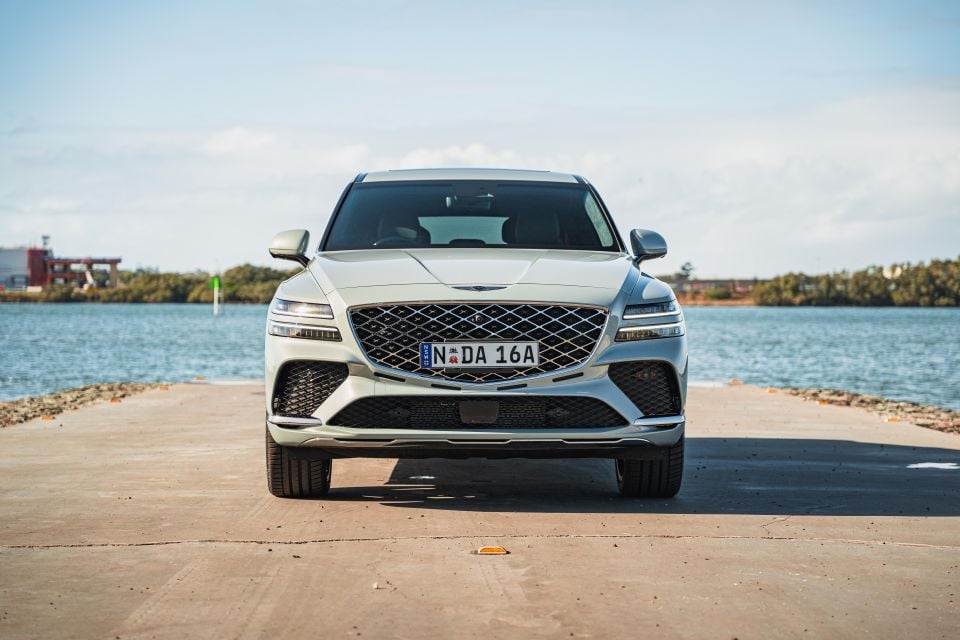
The Genesis GV80 is a BMW X5 or Mercedes-Benz GLE competitor and the GV80 Coupe we have on test is a BMW X6 or Mercedes-Benz GLE Coupe competitor.
Back in 2007, some smart marketing folks at BMW worked out some of their customers no longer had the kids they need to carry around all the time in a big SUV… but still love the idea of driving one, albeit one that looks sportier.
As such, the X6 was born to much (surprising) success. Since then Mercedes-Benz and Audi have both copied the concept, and the GV80 Coupe has also joined the party.
Now that we have had the GV80 Coupe for about a month, it’s time to give our initial thoughts.
The Genesis GV80 range starts at $130,000 for the seven-seat standard SUV, goes up by $3000 if you pick the Captain’s Chair style seats (2+2+2), and another $3000 if you chose to have less headspace in the second row and no third row seating at all.
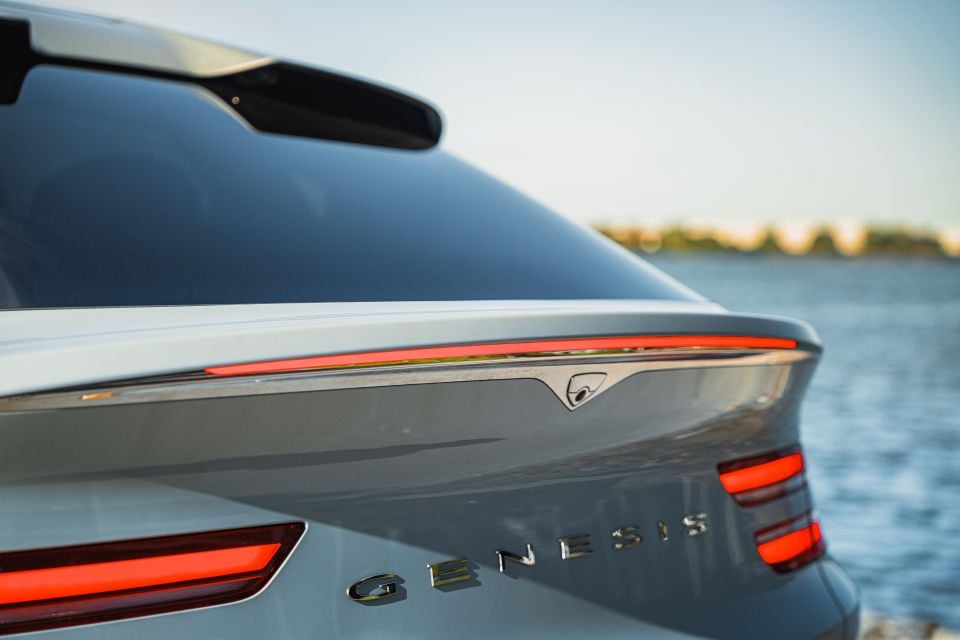
| Model | Price before on-roads |
|---|---|
| 2025 Genesis GV80 (7-seat) | $130,000 |
| 2025 Genesis GV80 (6-seat) | $133,000 |
| 2025 Genesis GV80 Coupe | $136,000 |
For the GV80 Coupe, you can pay about $4000 more to get a rear seat entertainment system with two 14.6 inch touchscreens, but realistically the kids will just use their iPads.
There are eight standard colours to pick from. The one we have here is Bering Blue Gloss, which is exclusive to the Coupe. You can also go for one of three matte colours for another $2000, but we wouldn’t recommend this as our GV70 was matte white and the tiniest scratch or damage was near impossible to fix economically.
Realistically, you will be paying about $145,000-150,000 for your GV80 Coupe on-road. The Genesis GV80 Coupe undercuts a BMW X6 xDrive40i by $8900 (list price) and the Mercedes-Benz GLE 450 Coupe by $23,900.
We highly recommend, in order to get a better ‘deal’ (since there is no discount on the price itself) using your trade-in as leverage. The brand can offer you a higher trade-in price than you may get elsewhere without officially discounting their own product which is still ultimately a deal to be had.
To see how the GV80 lines up against the competition, check out our comparison tool.
The main reason the Genesis brand has so much appeal with my wife and I is the interior fit and finish, and the general feel once you get inside.
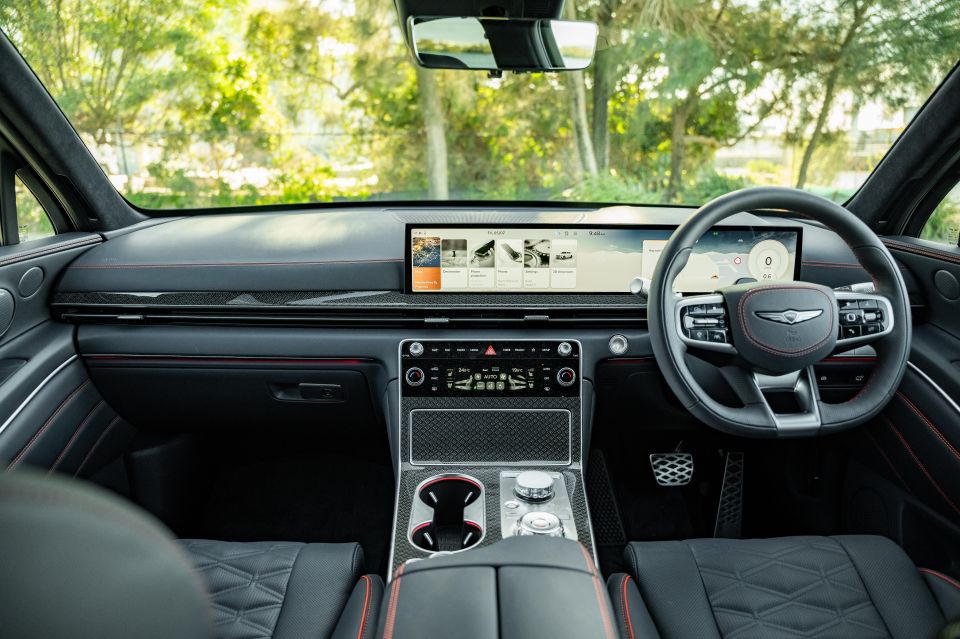
The Koreans have been able to take what brands like Bentley and Rolls-Royce offer (minus the insane levels of customisation) and – to a great extent – bring it to more affordable offerings. It sounds crazy to say, but it’s actually the case. The fit and finish of Genesis vehicles is excellent.
Go sit inside a Genesis GV80 Coupe and then go sit inside an equivalent German vehicle and you will see night and day in material quality and ambience. The Korean product is simply better – it feels better to touch, it’s put together better, and the surface material and tactile sensation is better.
Pretty much every surface you can touch is finished in Nappa leather, suede, or soft-touch plastic. We are talking places that you probably will never touch, like the inside of the door pockets. Go try that on a German car and see what you find.
In fact, in my opinion, the real competitor in terms of interior quality is not the Germans, but Lexus – which also does an excellent job, but is massively let down by its technology offering.
In our month with the car we have found the interior to be superb. The GV80 Coupe gets to act all sporty by having carbon-fibre inlays over wood or metal (it would be nice if there was a choice, as the wood is nice) and comes with more features over the standard GV80 such as aluminium pedals.
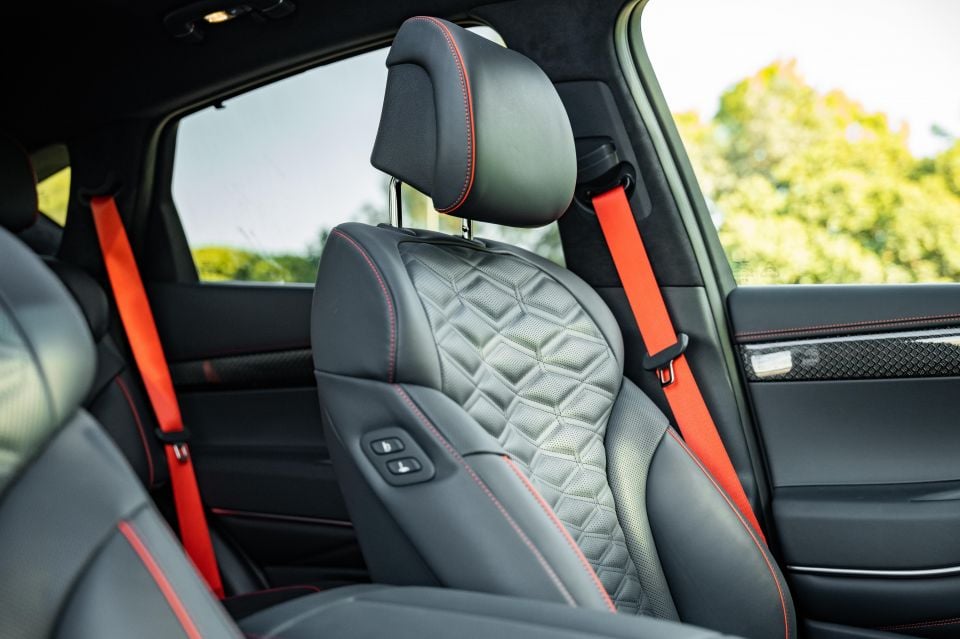


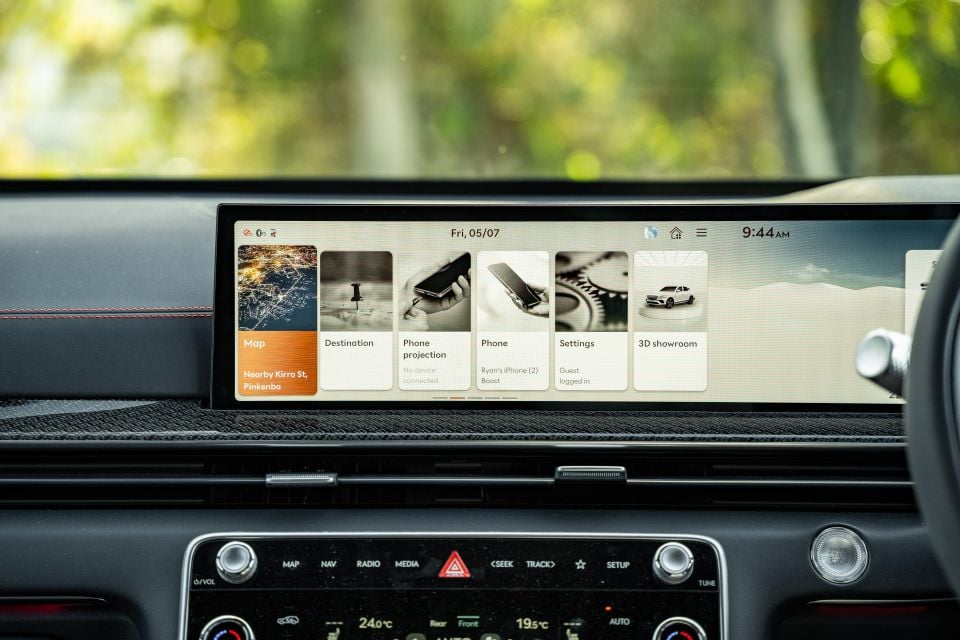
Ignoring the little things, the biggest difference from GV80 to GV80 Coupe is in the rear. The coupe-like sloping roofline takes away 20mm of headroom in the second row (955mm for the Coupe), which is pretty reasonable unless you’re well and truly north of 180cm.
This is a car made predominantly for front passengers that still prefer the benefit of SUV’s ride height, comfort, and visibility – if you want more headroom and storage space, buy the regular GV80.
Since we have two younger kids, headroom isn’t much of an issue and they very much appreciate having their own separate climate controls and vents, two USB-C outlets, a 12V outlet, as well as heated and ventilated outboard seats.
Those with younger kids will appreciate the two ISOFIX child seat anchor points for the outboard second-row seats, plus top-tether outlets for all three seating positions.
With no third-row seating like the regular GV80, the coupe’s boot is still a substantial 644L – which we found to be big enough to fit a small kid’s bike plus lots of other things without issue. This expands to 1033L with the rear seats folded. For context, the regular GV80 has 735L and 1097L respectively.
The single-pane panoramic sunroof replaces the dual from the standard car, it works well and the proper shade means the Brisbane sun doesn’t penetrate the cabin when parked outside.
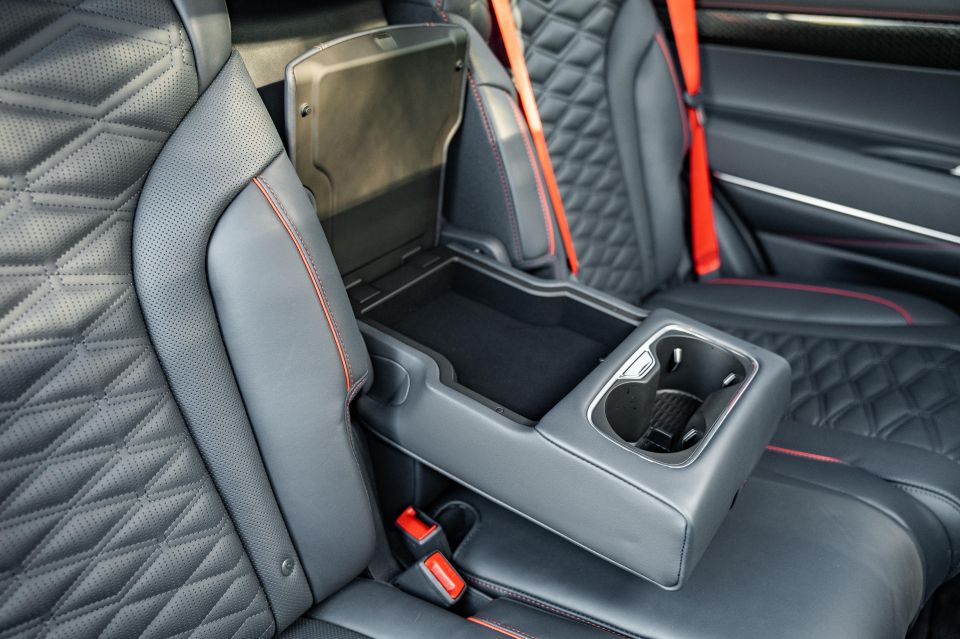

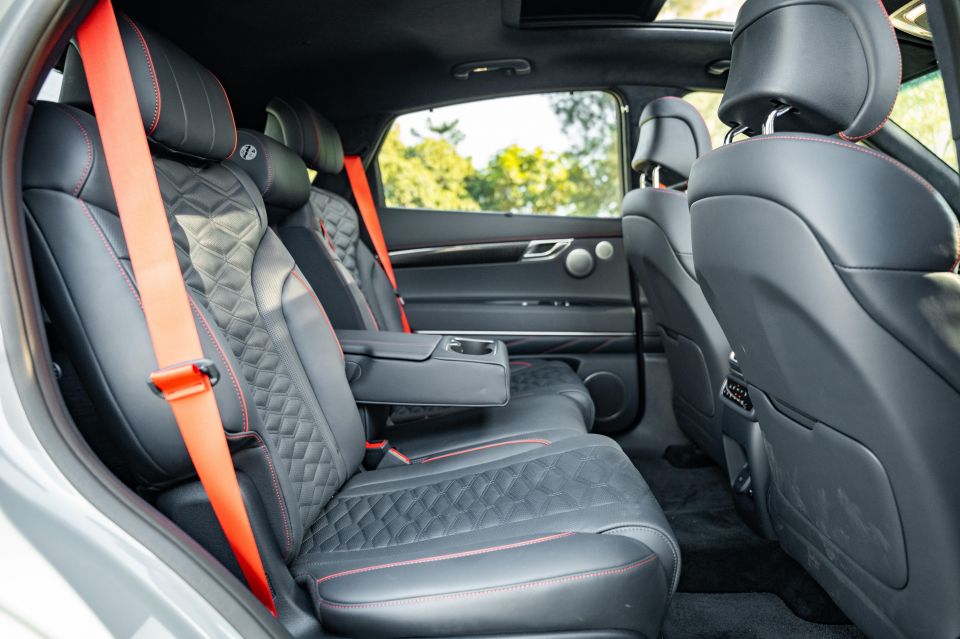
For the technology minded folks, its hard to go past the giant 27-inch OLED display.
Unlike other OEMs that put two screens next to each other and make it look like it’s one screen, this is actually one screen (or at least there’s no gap in the display) and you can have a full widescreen view of certain features.
One of the features that really took some getting used to in our GV70 was the dual rotary dials. The nicely textured one in the back is to select gears and the one in front controls the infotainment system.
This takes some getting used to, and we certainly got the two confused when we had our first Genesis but trust me, you’ll get used to it… eventually.
A few things we have liked about the car so far: the massage seats are pretty nice and come on automatically when you drive for more than an hour, or you can turn them on using a button on the seat.
The USB-C port is a fast charger. We have yet to get the actual wattage of the unit from Genesis but it would be a pretty reasonable amount of power because it can charge my iPhone 15 Pro Max at a rapid rate. This brings us to the most annoying feature of the GV80 – or all Genesis vehicles – the lack of wireless Apple CarPlay.
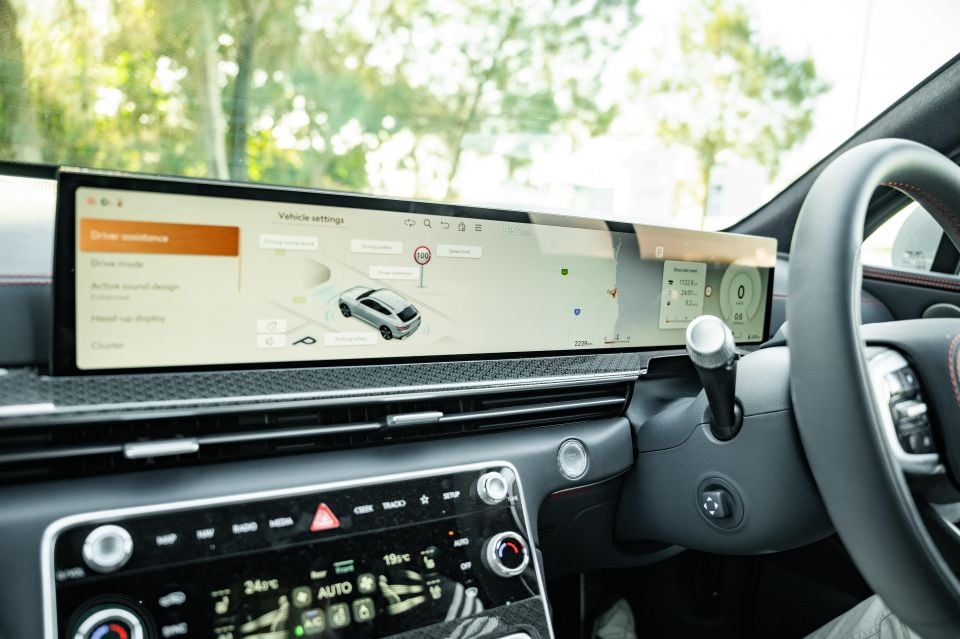
While the GV80 has a good, fast wireless phone charger, it doesn’t have wireless CarPlay – which actually makes the wireless phone charger useless. So in order to get CarPlay to work you need a USB-C to USB-C cable (for iPhone 15 and above, or USB-C to Lightning for older models).
When plugged in, CarPlay works great and the Bang & Olufsen 18 speaker-sound system is truly epic but having to plug your phone in each and every time is a bit frustrating.
You can fix the issue with a CarPlay wireless dongle from Amazon for about $100 (which plugs into the same USB-C port and connects to your iPhone) but the reliability of those units is nowhere near as good as if it was just built in… like a base model Hyundai i30!
Many questions remain as to why this obvious feature is lacking but it’s not a deal breaker.
Note: Genesis Australia recently announced a series of software upgrades that will bring features like wireless Apple CarPlay and Android Auto to existing vehicles – read more on that here.
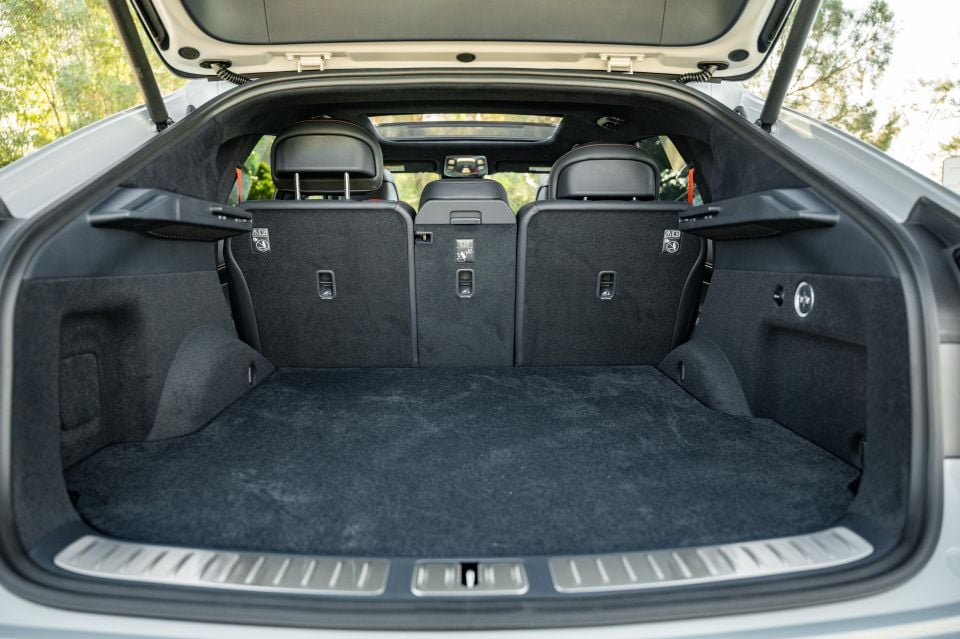
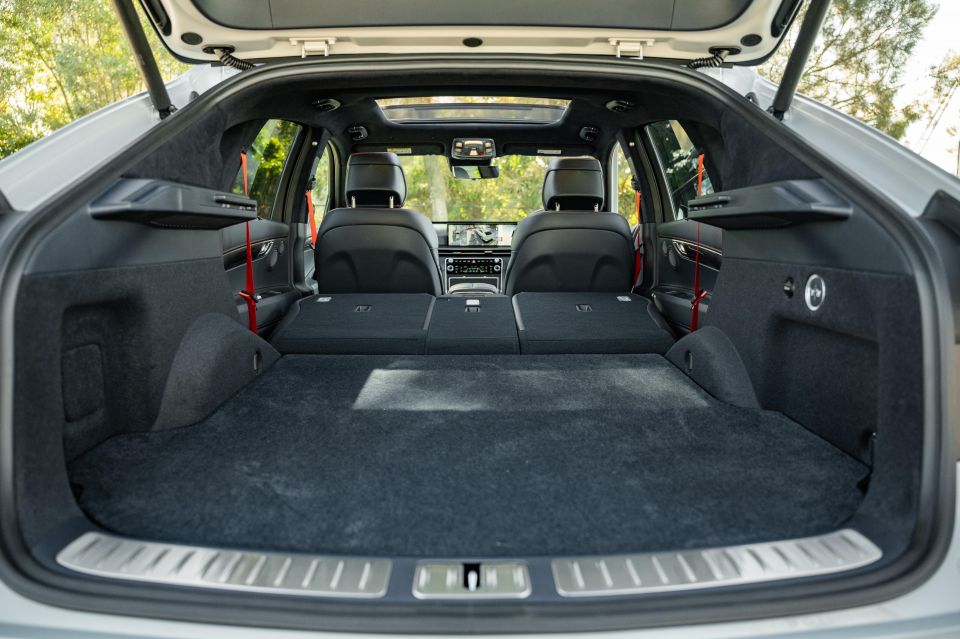
| Dimensions | Genesis GV80 Coupe |
|---|---|
| Length | 4956mm |
| Width | 1975mm |
| Height | 1710mm |
| Wheelbase | 2955mm |
| Cargo capacity | 644 litres (5 seats) 1033 litres (2 seats) |
To see how the GV80 lines up against the competition, check out our comparison tool.
Unfortunately for Australia, we don’t get the new and more powerful 3.5-litre six-cylinder supercharged engine which is only for left-hand drive markets.
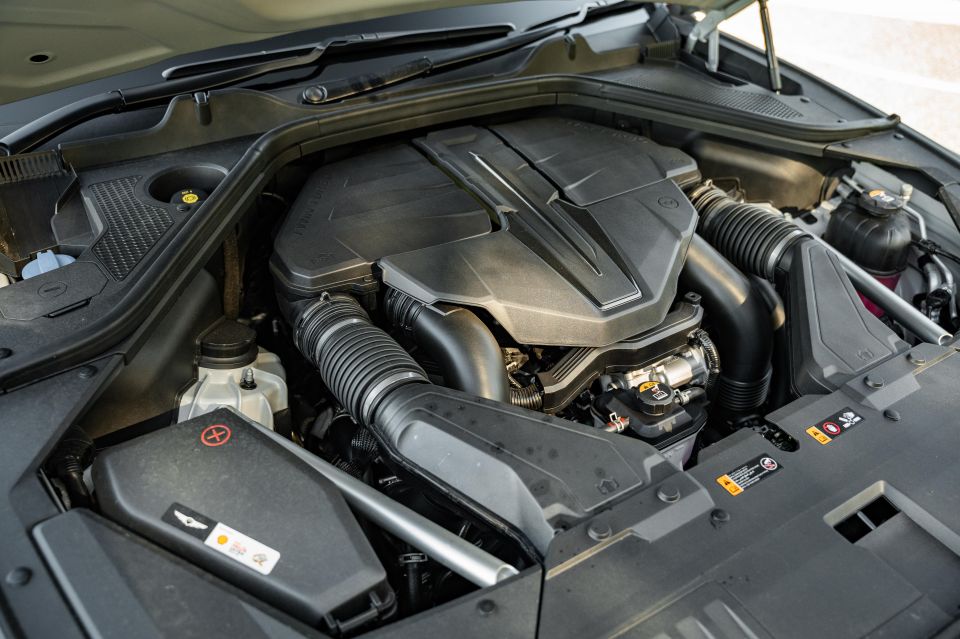
Instead, our GV80 Coupe gets the same engine as the regular GV80, which is a V6 twin-turbo petrol with 279kW of power and 530Nm of torque – that’s down 30kW and 10Nm from the newer engine, although this is reflected in the pricing of our Coupe compared to overseas markets.
| Model | Genesis GV80 Coupe |
|---|---|
| Engine | 3.5-litre twin-turbo V6 |
| Power | 279kW at 5800rpm |
| Torque | 530Nm at 1300-4500rpm |
| Transmission | 8-speed automatic |
| Driven wheels | All-wheel drive |
| 0-100km/h | 5.7 seconds (0.1s slower than GV80 3.5T) |
| Weight | 2205-2325kg (kerb) |
| Fuel economy (claim) | 11.7L/100km |
| Fuel economy (observed) | 13.6L/100km |
| Fuel tank size | 80 litres |
| Fuel requirement | 95 RON |
To see how the GV80 lines up against the competition, check out our comparison tool.
We haven’t yet had a chance to take it to its limits, but the GV80 Coupe is a big beast and not the sort of thing you would compare against a BMW X6 M (which also happens to cost double).

While it looks sporty and has a lot of mechanical grip, it’s not a sports car nor is it meant to do any real sort of rapid directional changes, because you can definitely feel the 2205kg kerb weight – not that dissimilar to an X6.
If you’re buying this for a blast late at night on your favourite road, it’s probably the wrong application. This is a reasonably quick car at 5.7 seconds to 100km/h, but it’s more of a GT than a sports car. It’s extremely comfortable and the noise intrusion into the cabin is almost non-existent.
The Genesis GV80 Coupe is definitely more about luxury than being sporty, and we feel that is exactly what it needs to be.
An area of driving that drives us mad, however, is the active speed limit warning alert. This is now a requirement in Europe, and Genesis (and Hyundai) has simply taken the same settings from Europe for Australian-delivered cars.
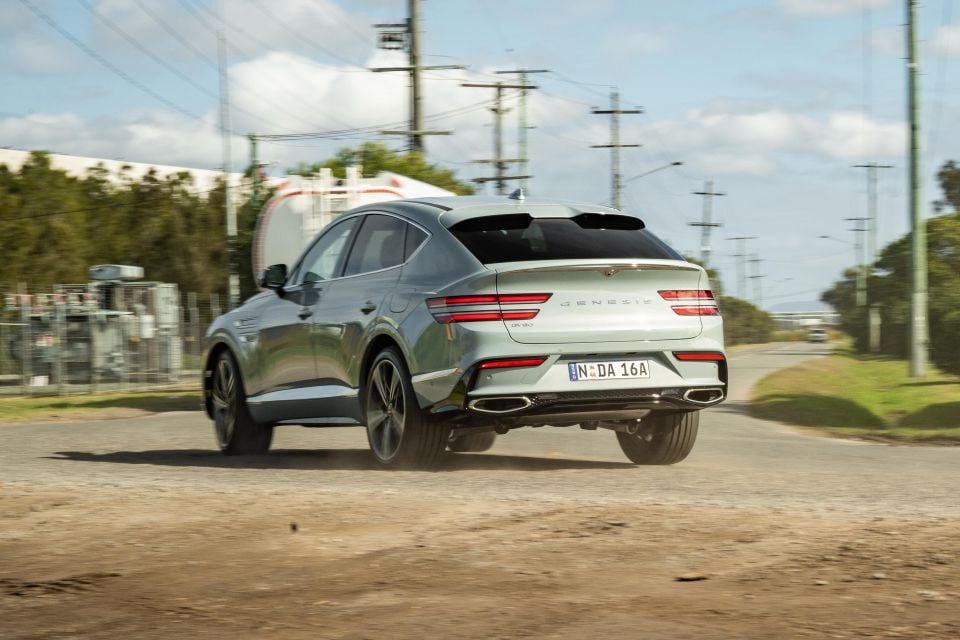
This means every time you go 2km/h over the speed limit, it will beep at you to drive you as mad as possible. Can you turn it off? Yes… while you are trying to go through the three or four steps to get to the screen to disable it, it will then give an attention warning saying you’re not looking ahead.
Even when you turn it off, it turns itself back on each and every time the car is restarted. This is again required by European law and will no doubt be the case here in no time as well.
I took this issue up with Genesis and was told Hyundai has rolled out a feature that will allow you to press a shortcut on the steering wheel and disable it, and there is hope that Genesis will get the same ‘feature’.
It’s absurd we’re letting bureaucrats make rules about what is required for safety, and what is beneficial.
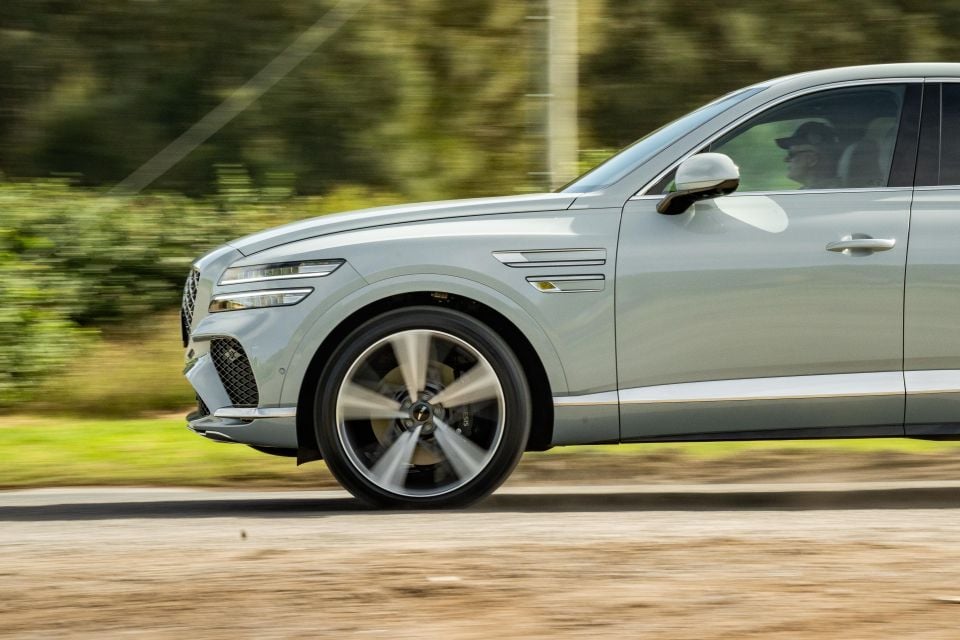
This is the most annoying feature you will find in all new cars soon.
It will drive you mad and make you far more distracted in trying to turn it off each and every time. I would love to go and visit whoever came up with this rule and have a nice chat with them.
It would be good if at least the tolerance for the speed could be set higher to 10km/h over the limit not 2km/h, because even the car’s own speedometer is usually out by 2-3km/h.
In order to actually go the right speed based on GPS, you are going to be going a little faster.
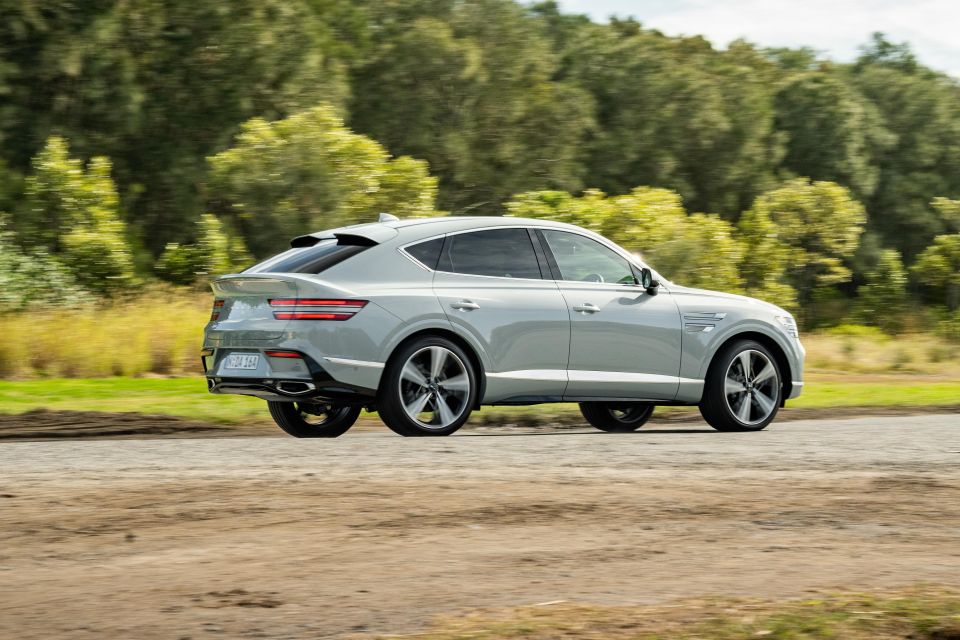
Every morning when I jump in the car I have a process of plugging my phone in and digging through the menu system (first I have to let it boot up) to disable the speed limit.
Sometimes if I have to jump out and do something and get back in, I forget to disable the feature and a few minutes in, it will start to beep and drive me mad.
It’s unfair to blame Genesis for a European regulation, however it would be nice if they disabled it for Australia – as this is not yet a requirement here.
Other than that, my wife and I have both thoroughly enjoyed driving the GV80 this last few weeks.
The 2025 GV80 Coupe gets all the features of the GV80 with Luxury Package with a handful of additional items.

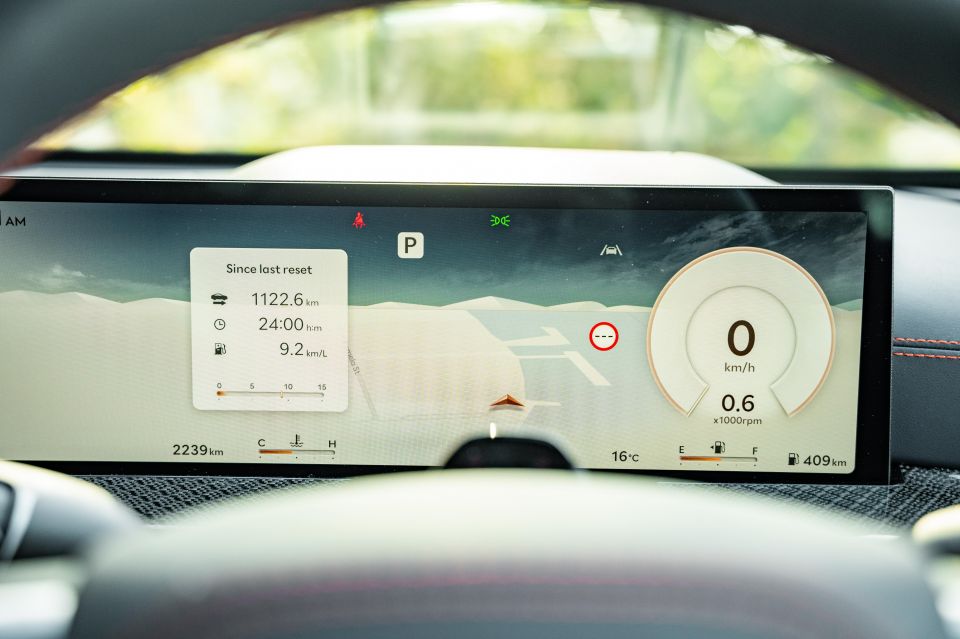
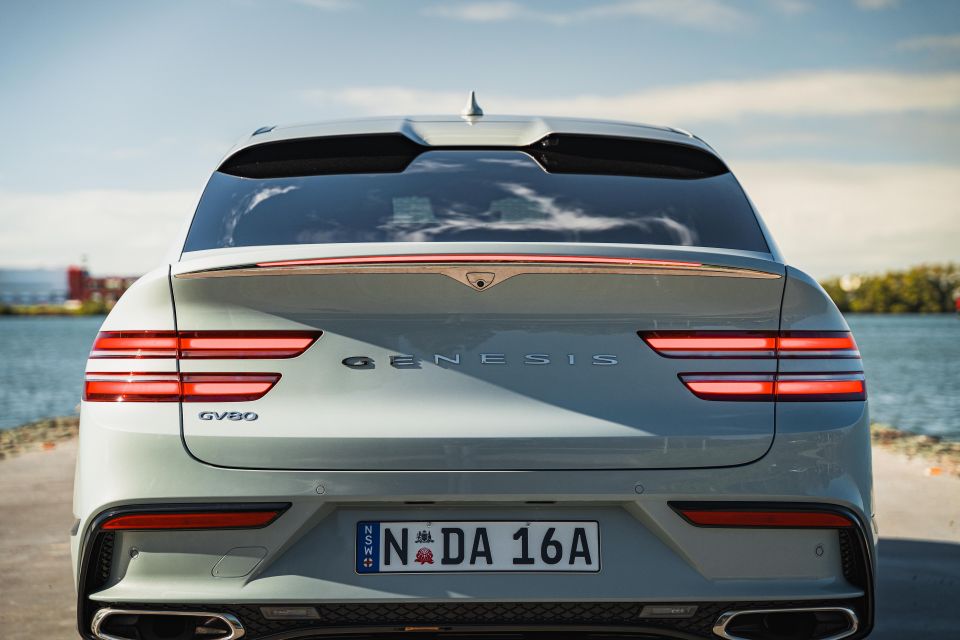
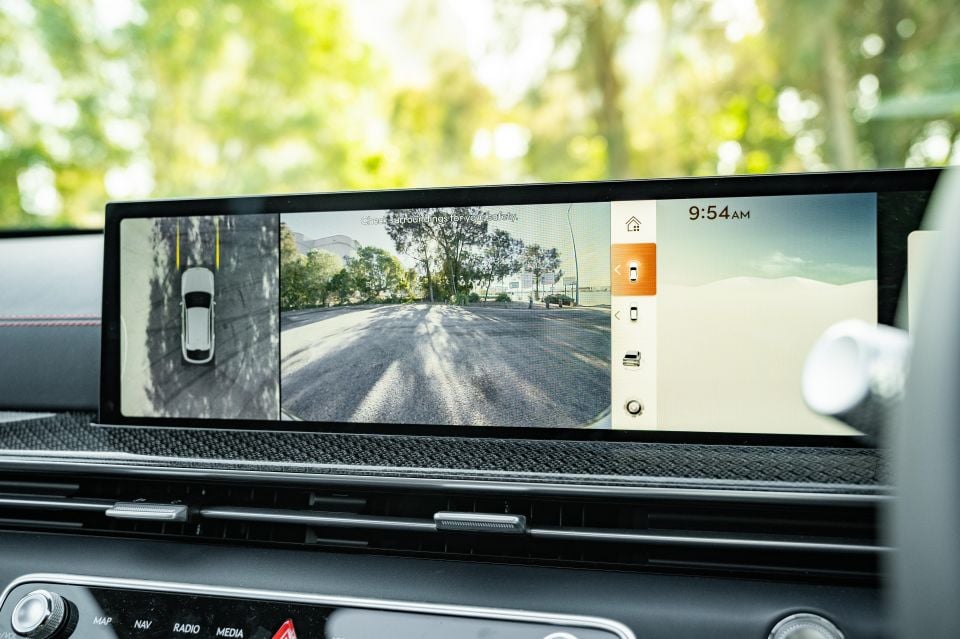
Genesis GV80 standard equipment:
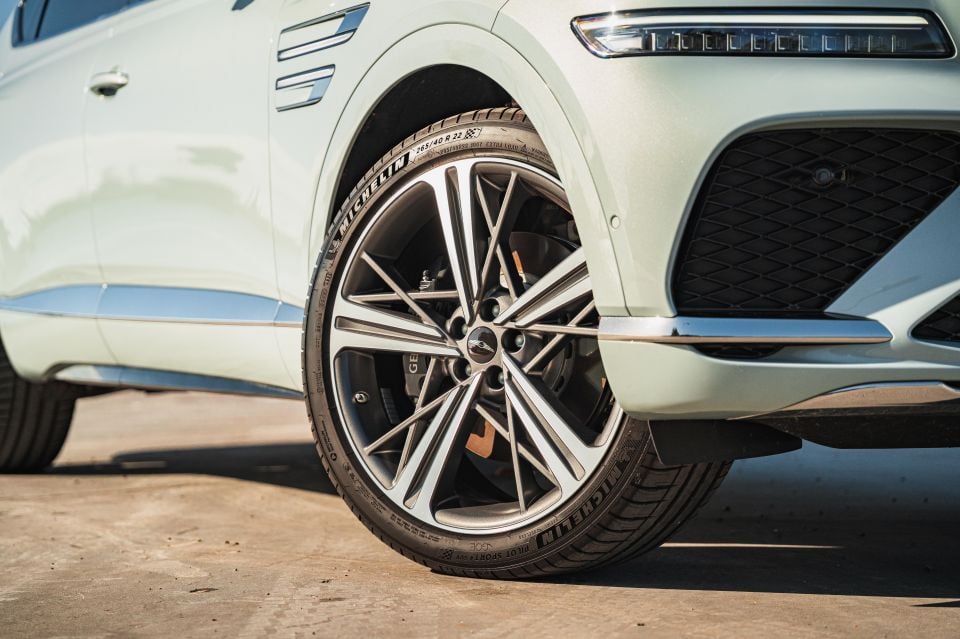

GV80 Coupe adds:
All models have Genesis Connected Car Services, which include:
You can also use a smartphone app to access the following functions:
A rear-seat entertainment package is $4500 on all GV80s; bringing dual 14.7-inch touchscreens, a remote control, a USB-C port and an HDMI port.
Short answer is yes.
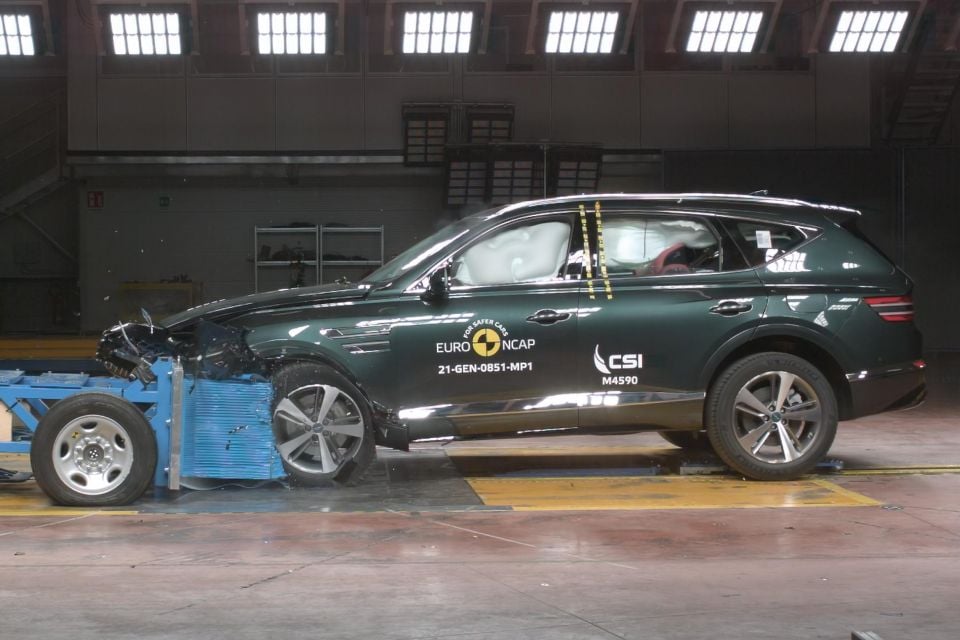
The car’s 2021 five-star rating doesn’t apply to the petrol V6, and some of the requirements for a rating have changed since it was tested, but they are predominantly driven by annoying features such as the speed limit warning and not actual safety improvements in the chassis and occupant protection – which remains excellent.
GV80 Coupe standard safety equipment includes:
The GV80 range is backed by a five-year, unlimited-kilometre warranty with five years or 50,000km of complimentary scheduled servicing.
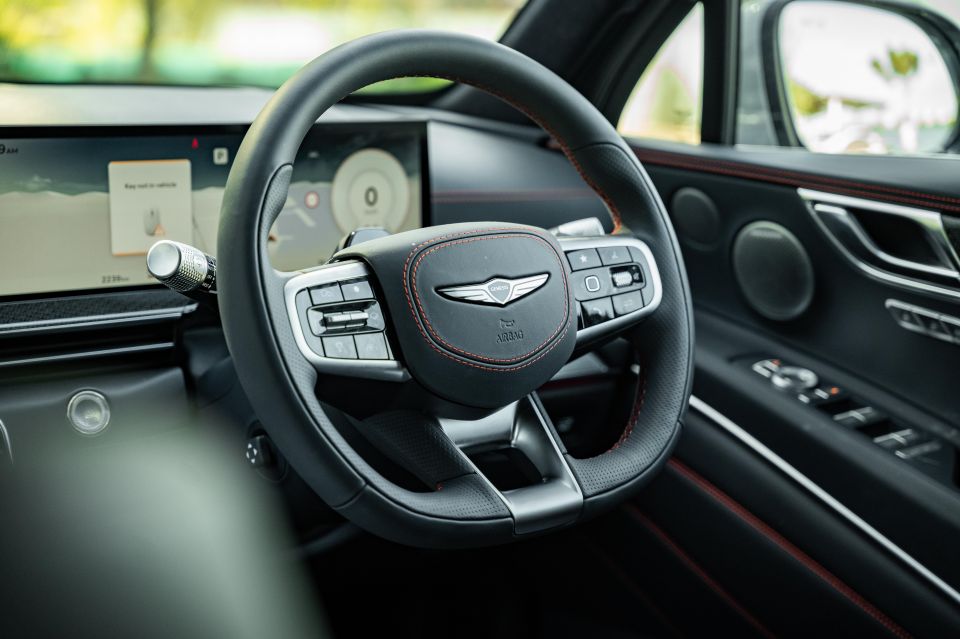
Servicing is required every 12 months or 10,000km, and Genesis offers its Genesis To You service during the warranty period.
This sees a valet come collect your Genesis for servicing and leave you with another Genesis vehicle. The complimentary pickup service is available if you’re within 70km driving distance from the Sydney, Melbourne, or Brisbane CBDs.
There’s five years of roadside assistance, extending to 10 years if you service your vehicle with Genesis.
| Running costs | Genesis GV80 Coupe |
|---|---|
| Warranty | 5 years, unlimited kilometres |
| Roadside assistance | Up to 10 years (service activated) |
| Service intervals | 12 months or 10,000 kilometres |
| Capped price servicing | 5 years / 50,000km |
| Total capped price service cost | Free |
So far so good – we will be updating this as our time with the Genesis continues.
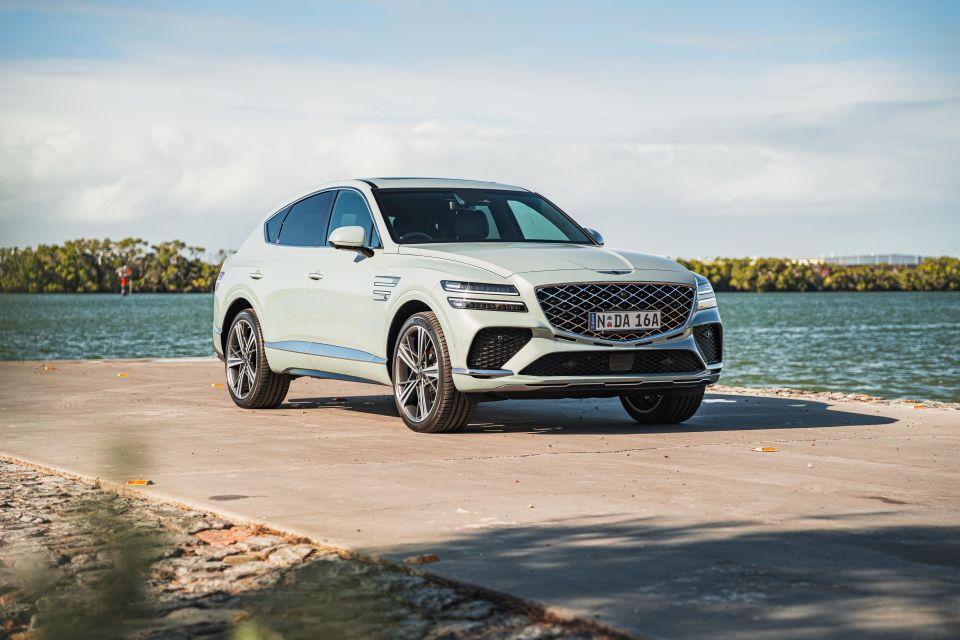
For now though, if you’re in the market for a big luxury SUV, definitely go check out the GV80 (and GV70) as part of your shortlist alongside the Germans and Lexus.
It won’t disappoint. In fact, we think you will be very surprised and then be conflicted about whether you want to pay for a badge over features and better quality.
Click the images for the full gallery
MORE: Buy a Genesis GV80 MORE: Everything Genesis GV80
Take advantage of Australia's BIGGEST new car website to find a great deal on a Genesis GV80.
Alborz is the founder of CarAdvice (sold to Nine and now Drive) and co-founder of CarExpert. He is an honourary adjunct professor & entrepreneur in residence at the University of QLD. He loves naturally-aspirated V8s, V10s and V12s and is in denial about the impending death of the internal combustion engine. The best way to reach him is via Instagram.


James Wong
7.9
6 Days Ago
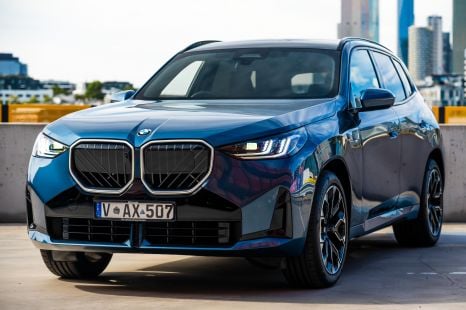

Jack Quick
8.4
5 Days Ago
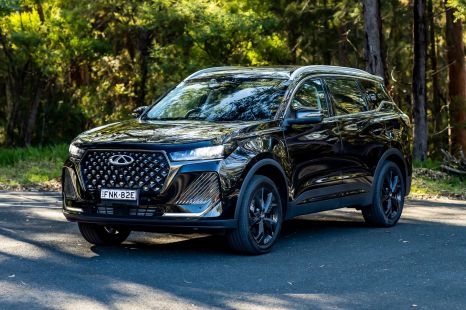

Matt Campbell
8.1
4 Days Ago
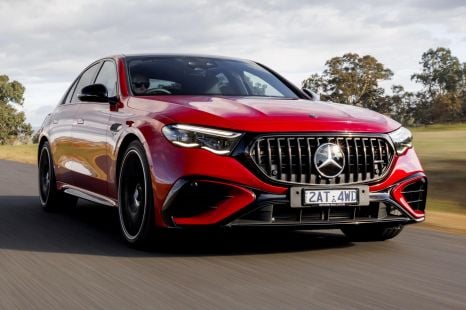

Max Davies
8
2 Days Ago
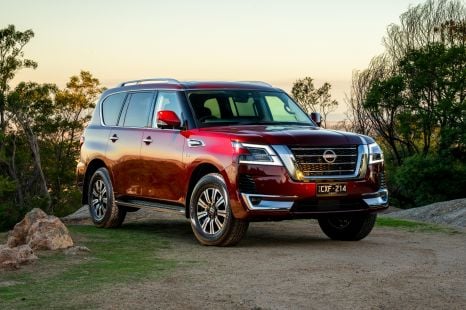

James Wong
8.1
1 Day Ago
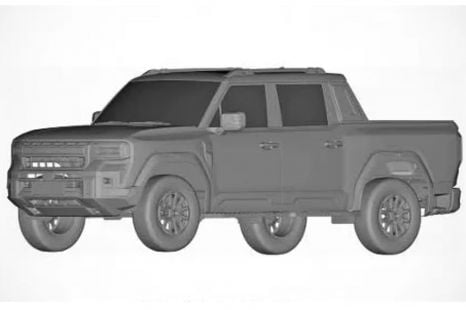

Marton Pettendy
22 Hours Ago
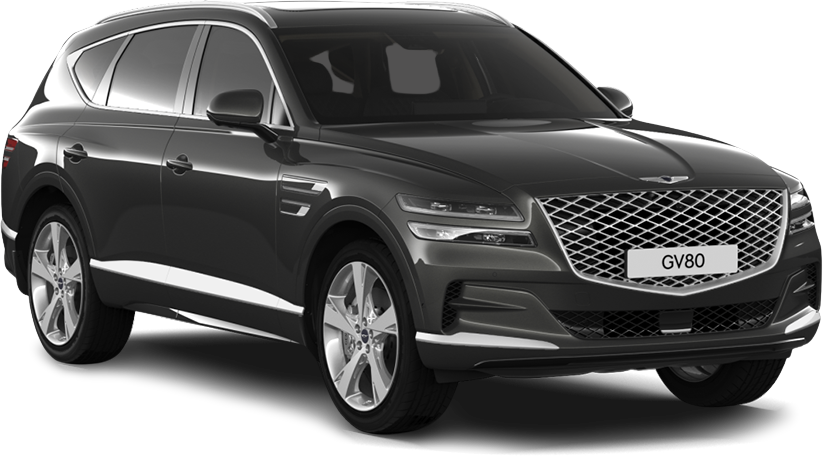
8.4
1
10